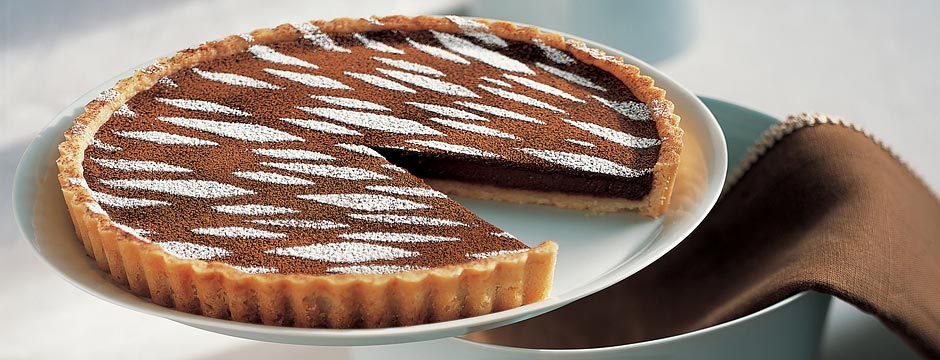Rules and Ratios
August 27th, 2011 by Alice Medrich

August 27th, 2011 by Alice Medrich
March 19th, 2011 by Alice Medrich
(Revised from Chewy Gooey Crispy Crunchy Melt-In-Your-Mouth Cookies)
Makes 1 generous cup
Ingredients:
½ vanilla bean
1 quart whole milk
1 tablespoon butter
½ cup (3.5 ounces) sugar
½ teaspoon baking soda
Pinch of salt (optional but really good…)
Set a fine or medium fine strainer over a heatproof bowl.
With a sharp paring knife, cut the vanilla bean in half lengthwise. In a large heavy bottomed pot (that holds at least 6-quarts) combine the vanilla bean pieces with the milk, butter, sugar, baking soda, and salt. Bring the mixture to a simmer, stirring frequently, especially around the sides of the pot. At first the milk will foam dramatically, and it may curdle, but will eventually smooth out. Continue to cook, frequently stirring in any foam on top and sweeping the sides, corners, and all over the bottom of the pot with a silicone spatula. Keep the mixture boiling briskly but not furiously without letting it overflow. The mixture will gradually turn a deep caramel color as it thickens. This may take from 60-90 minutes, depending on your stove and the size of your pot. The mixture becomes especially bubbly and foamy in the last stages of cooking: adjust the heat so that it bubbles actively but not violently and stir it very frequently, and then constantly (especially around the sides and corners of the pot) until done. It is done when the mixture is reduced to a generous cup and a little spooned over an ice cube thickens to a soft gel. Scrape the sauce into the strainer and stir and press it through. Be sure to scrape the sauce from underneath the strainer into the bowl. Cool the sauce slightly, then taste and adjust the salt. You can put the spent pieces of vanilla bean back into the mixture if you like. They will either keep on giving flavor or at least look as though they are. May be kept in a covered container in the refrigerator for at least 1 month
August 18th, 2010 by Alice Medrich
What a surprise to learn that starting a blog is more intimidating than writing a book. It’s immediate. Where is the editor to prevent one from making a fool of oneself or committing atrocious grammar? The spontaneity goes against my nature, which is to write (or test) and rewrite (or retest) and rewrite and retest again. To ease into it, I planned a little essay on the creative process. I love to hear any artist (writer, painter, dancer, musician, chef) discuss their work. Even the most mundane details of how they actually do the work has a voyeuristic fascination for me. National Public Radio is a staple in my kitchen. I love Terry Gross and City Arts and Lectures. I planned to cite Malcom Gladwell’s descriptions of artists and their work styles from his New Yorker piece, “Late Bloomers”.
But by the time I sat down to write that essay, I was overcome by my own process. All kitchen counters and the dining room table were covered with labeled samples. The actual work area was a landscape of drips, greasy spatulas, and bowls full of goop flanked by clipboards with handwritten notes coded to match (I hope) the labeled samples. I start a clipboard at the beginning of each project (book, magazine article, client) and after a while I move pages from the clipboard into a binder so I can put tabs on groups of pages to keep some order. I try to remember to date every page and I put the most recent page on top, like a legal brief. I used to be able to have three or four clipboards in play at one time. But lately not so much. After scribbling tasting notes on the wrong clipboard a few times, I refined my process. Now it’s one or possibly two clipboards at a time, and NPR stays on.
I have a reputation for testing. A lot. Anyone who has read or cooked from my books, Bittersweet or Pure Dessert knows this. I thought I was normal until Dianne Jacob described my testing mania in her book, Will Write for Food (a wonderful manual for budding food and cookbook writers, btw). Then I felt self-conscious. But, some times multiple trials are necessary to get flavor, texture, and visuals of a dessert right to begin with. Other times I retest because I’m stubborn or curious. Even when I like my results, I catch myself wondering what would happen if I made this little change, or that one. I love how small details make a difference. “What if this, what if that” is the hallmark of my process and perhaps my greatest professional and artistic asset and also my biggest liability. If I take more time on a recipe than I think I should, I figure it’s an investment for a future project. You can imagine where that leads…
Welcome to my blog, I promise recipes and photos (and shorter posts) in future, but meanwhile check out Malcolm Gladwell’s “Late Bloomers” to find out if you are more like Picasso or more like Matisse. http://www.newyorker.com/reporting/2008/10/20/081020fa_fact_gladwell?printable=true.